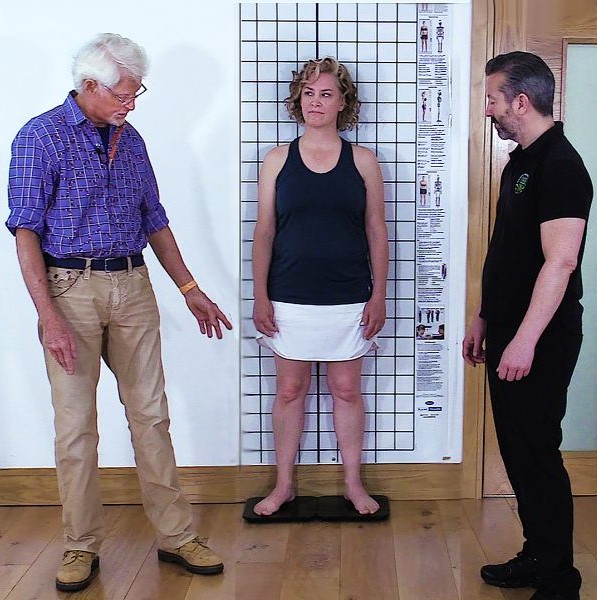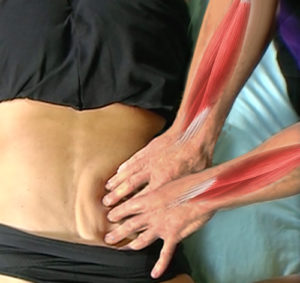ART is an acronym for an osteopathic assessment method that stands for:
- Asymmetry,
- Restriction of motion
- Tissue texture abnormalities
In this post, we’ll briefly discuss asymmetry.
Humans are born asymmetrical. The structure and location of the digestive, respiratory, and cardiovascular systems make us naturally asymmetrical to some degree. In addition, most of us are right-motor dominant, and the resulting weight imbalance is often reflected in asymmetrical postural patterns. For example, research has found most people bear more weight on the right motor dominant leg, causing it to be nearly 5 percent larger in volume! Over time, uneven loading of the dominant leg may result in leg-length discrepancies, pelvic-bowl rotations, and spinal compensations.
Asymmetries may be at the root of your client’s pain complaints and need to be addressed. But even if your clients are asymptomatic, you should still address the imbalances proactively. Moving the body towards balance is never a bad goal. Balancing the body by minimizing asymmetries will optimize their body mechanics and may prevent serious pain issues further down the road.
In observing for asymmetry as part of your assessment, you’ll want to look for imbalances as soon as a client enters your office and is moving in their habitual way. They don’t know that they are being observed, so they won’t try to adjust their posture in a way they think might be correct. Be on the lookout for posturofunctional deviations, such as loss of cross-patterned gait, upper and lower crossed syndromes, and an unlevel pelvis or head.
Next formally observe them in a standing position. Have the client march in place a few times and then stop to get them into their normal neutral position. As an alternative to marching, have them jump in place several times. Usually they’ll land with the feet in the position that they naturally assume when weight bearing. Have your client look straight ahead as you stand in front of them to determine if there are any obvious asymmetries from side to side. Start at the feet and visually make your way up the body. Besides lateral deviations, you may also notice rotational deviations. Their hips, pelvis, shoulder girdle or head may be rotated to the left or right.

the new Pain Detectives ecourse. Here they are having their client stand
on two scales to check their weight distribution on each leg.
All these visible asymmetries give you clues which would suggest areas of soft tissue tightness or weakness, as well as structural abnormalities, like a long leg on one side. Because most people are right-side dominant you can expect to see some typical findings: The right foot is more turned out and the right shoulder is lower and protracted.
Then turn your client around. Looking at your client from the back may reveal some imbalances that weren’t as obvious from the front. Again, scan from the feet up or the head down. If you have your client slowly round forward (ex. slowly reach down to their toes), you may see one side of the back is higher than the other which would indicate spinal rotation. You could also have your client do sidebending to the left and right. Examine how the movement compares from side to side to determine whether there may be some tightness that restricts movement on one side or the other.
Looking from the side, you can see how the segments of the body line up and whether some of those segments are positioned behind or forward of an imaginary plumb line. For example, you may see a head-forward carriage. Rotational asymmetries may be easier to see from this perspective.
After performing a complete observational assessment in the standing position, you should have a good general sense of possible areas of tightness or weakness. Checking for asymmetries doesn’t stop there. You can continue to assess as you treat. With your client on the table, you’re not only looking visually for imbalances, but also noting how the client’s body responds to movement, both active and passive. In the video above, you’ll see Erik Dalton perform cervical rotation with his client, Judy, in a supine position. Passive movement of the neck is even on each side, but Judy is unable to rotate her head to one side without engaging muscles that take her head into extension.
Identifying asymmetries can give you important clues in determining the source of your client’s pain. So be sure to observe for imbalances when your client walks into your clinic, perform a postural assessment, and continue looking for asymmetry as part of your treatment process.
On sale this week only!
Save 25% off the "Dalton Technique Treasures" eCourse
The “Dalton Technique Treasures” eLearning course is a compilation of some of Erik’s favorite Myoskeletal Alignment Techniques (MAT). Learn MAT techniques to assess and address specific sports injuries, structural misalignment, nervous system overload, and overuse conditions. ON SALE UNTIL July 29th! Get Lifetime Access: As in all our eLearning courses, you get easy access to the course online and there is no expiry date.







